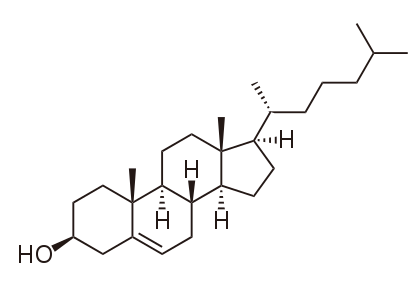macrolide-antibiotics
Cholesterol and ergosterol
The cell membranes of many living organisms contain sterols. Cholesterol is found in cell membranes of animals, ergosterol in fungi and protozoa, and phytosterols (including campesterol, sitosterol, and stigmasterol) in plants.
Relevance of macrolide antibiotics
Because ergosterol is present in cell membranes of fungi, yet absent in those of animals, it is a useful target for antifungal drugs.Ref Macrolide antibiotics such as Amphotericin B are target of ergosterol.Ref
Differences between cholesterol and ergosterol
Cholesterol and ergosterol have similar shapes. An important difference is the Hax(7) which is pointing out of the plane of cholesterol but is not present in ergosterol because of the additional double bound. This hydrogen atom (which can be highlighted in green in the structure) makes ergosterol thinner at the edge of ring B. We believe this is to be the key difference with respect to the formation of pore membranes with macrolide antibiotics. The other three additional H of cholesterol can also be highlighted. The sidechain of ergosterol is less flexible because of the double bound and the additional methyl and shifted down a bit.
| Cholesterol | Ergosterol |
|---|---|
 |
 |
View side/top. Synchronized cursors on/off.
Spin model on/off. Highlight differences on/off.
Cholesterol/ergosterol console.
print script("show orientation")